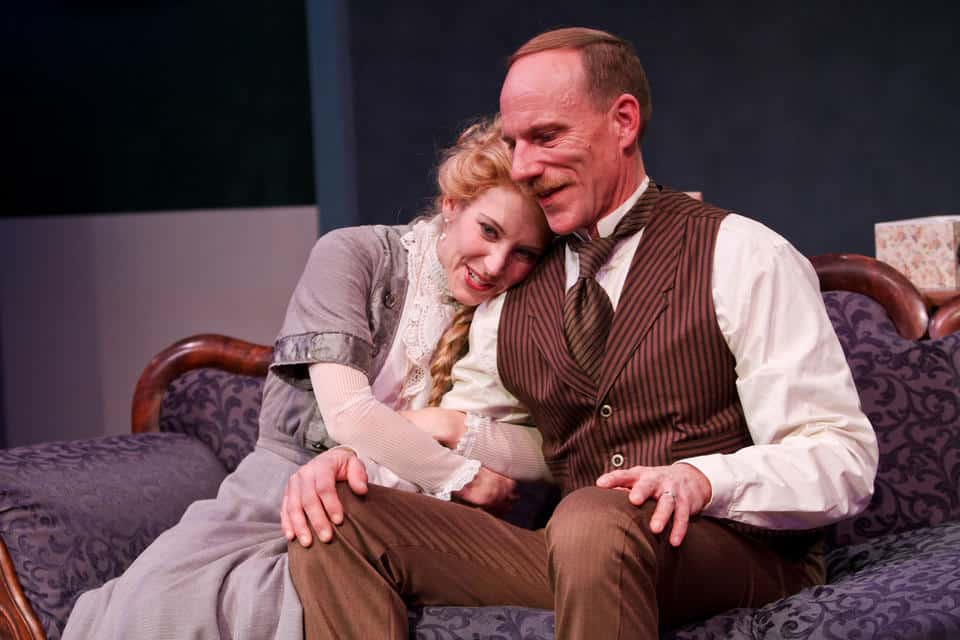
One of the most important, as well as most obvious themes in the play, is the theme of feminism. A Doll’s House throws light on the status of women in society particularly during the 19th century which was highly male-dominated, and the lack of identity and personal freedom that every oppressed woman victimized by the patriarchal society suffers. It represents the emancipation of women and conveys a message of empowerment.
Nora Helmer, the main protagonist of the play, is initially shown as a timid, rather childish woman, dominated, controlled, and patronized by her husband Torvald. The role of Nora is like that of a doll in a doll’s house. Referred to with condescending names such as ‘little skylark’, ‘little squirrel’, ‘little prodigal’ and ‘little featherbrain’ , she is treated by Torvald not only as subordinate to him but also as an object of his desire, a decorative item meant to beautify the house.
“You wouldn’t believe how much it costs a man when he’s got a little songbird like you!” Torvald neither sees, nor treats his wife as his equal. Nora is restricted from being her true self, from having or expressing her own opinions and from taking her own decisions. According to Torvald, the ‘most sacred duties’ of a woman are her duties towards her husband, her father and her children. Torvald dictates terms to Nora with respect to what she should or should not eat, how she should walk, and the like.
For instance, she is not disallowed from eating macaroons, although she often breaks this rule without her husband’s knowledge. Every error that Nora commits is attributed to her being a woman. “Nora, Nora! Just like a woman!” A victim of Torvald’s masculine pride and sense of superiority, Nora’s thoughts are often contaminated with self-doubt.”
I wish I had inherited more of papa’s good qualities.” She remains subordinate to Torvald, trying “tricks and entreaties” to please him in order to get her way. Nora also lacks her own self-identity; she belongs to Torvald, and does not have her own opinions. She plays along with Torvald, and also refers to herself as his “little squirrel”
A major part of the play revolves around Nora’s debt to Krogstad, and her crime of forgery. It is worth noting, that Nora builds up a lie that she borrowed money from her father, when in reality she has actually taken her own loan to help her husband out of his illness.
Nora might have masked this truth because the idea of a woman handling loans, especially without her husband’s aid or permission, was inconceivable for society back then. “Because a wife can’t borrow without her husband’s consent.”
Nora’s bold act in order to save her husband also shows what she is truly capable of, and that she is no less than the men in society. When Krogstad threatens to reveal Nora’s truth to her husband, she dreads a “miracle”- that when Torvald learns the truth, he will take it all on himself and even go to the extent of committing suicide to save her.
However, when this miracle does not happen, Nora realizes that, “For eight years I’d been living with a strange man.” It is then, that Nora’s riveting transformation into a courageous, mature and independent woman takes place.
Nora’s transformation depicts her ultimate freedom from the shackles of her husband’s dominating, cruel rule on her. She finally recognizes that both her husband and her father have committed a “grievous sin” against her. She says, “You arranged everything to suit your own taste, so I came to have the same tastes as yours… or I pretended to.”
She tells Torvald that he has never loved her, but only found it pleasant to be in love with her. She thus decides to leave Torvald and the children in order to educate herself, to get some experience, to learn and develop her own unique personality, and to fulfill her duties towards herself.
Thus Nora is a strong, self-reliant character in the play, and represents every oppressed woman and her true identity in society. When Nora plays the role of Torvald’s doll, she is shown as submissive, childish, incompetent, immature, and unintelligent. However, it is when she abandons this role and decides to leave, that one sees the actual Nora- bold and fiercely independent.
Mrs. Christine Linde, one of the secondary characters of the play, also represents the theme of feminism. Mrs. Linde is an independent, self-supporting, honest, and helpful individual. She has lived through a difficult past, with a sick mother and two younger brothers to take care of.
Thus she has always been the bread-earner as well as the source of support for her family, which is quite contradictory to the societal roles expected out of a woman, especially during those times.
She is shown to have been in a relationship with Nils Krogstad, which she breaks off to marry a wealthier person, as she desperately needs money. However, her husband soon dies, and she ends up meeting Krogstad again. She asks him to marry her, thus redeeming Krogstad and also finding a family to live for.
Thus both these characters wonderfully symbolize the theme of feminism, as they are seen breaking the stereotypical, patriarchal norms set by society regarding women. The play also conveys to the readers the importance of individual identity, and of personal liberty and freedom.
